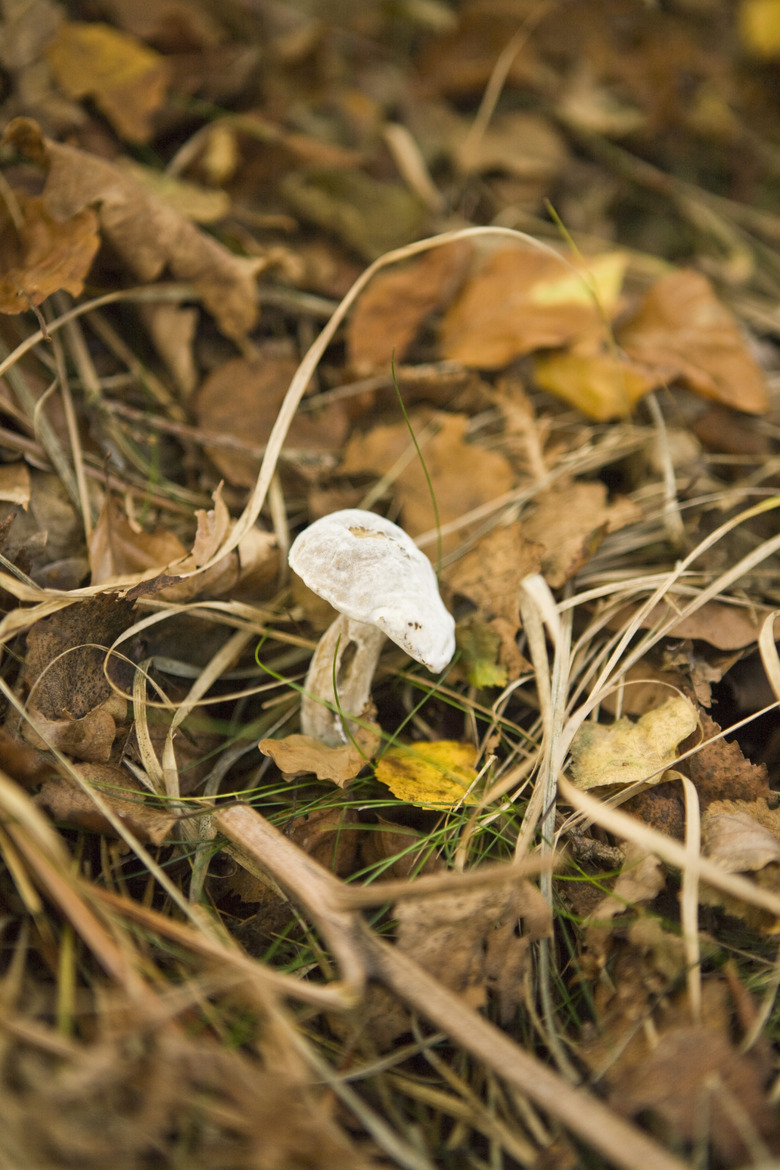Septate Vs. Non-Septate Hyphae
When you see a mushroom, you are looking at a tiny part of the whole fungus. Mushrooms are the fruiting bodies, the reproductive structure, for some types of fungi. The rest of the fungi is a body of fine threads weaving through the substrate and slowly digesting nutrients. While not all fungi form mushrooms, most do form a network of hyphae, tube-like structures that allow the fungus to search out and absorb new food sources. Non-septate hyphae are generally single-cell organisms.
Hyphae Growth and Structures
Hyphae Growth and Structures
A fungus starts from a spore and the initial hypha grows out from that germ. The first hypha grows out, extending at the tip, or apex, and then begins to branch out into richer areas of food, forming a body of hyphae, the mycelium. The hyphae exude digestive enzymes and absorb nutrients. As the mature fungus exhausts its food supply, it cannibalizes old hyphae and expands. Hyphae form more branches in areas that are richer in nutrients. Depending on the type of fungus, hyphae can be one large multi-nucleated cell, when they are called non-septate hyphae, or can have dividers between the individual cells, when they are called sepate hyphae.
Septate Hyphae
Septate Hyphae
Septate hyphae have dividers between the cells, called septa (singular septum). The septa have openings called pores between the cells, to allow the flow of cytoplasm and nutrients throughout the mycelium. Although the septa separate the cells, in some hyphae the cellular components, including the nucleus, can fit through the pores. When new cells bud at the apex of the hypha, a septum does not form immediately. As the new cell matures, the cell wall grows down into the cytoplasm, forming the septum. Members of the classes Basiodiomycetes and Ascomycetes form septate hyphae.
Non-Septate Hyphae
Non-Septate Hyphae
Non-septate hyphae, also known as aseptate or coenocytic hyphae, form one long cell with many nuclei. They are the more primitive form of hyphae; species with septate hyphae diverged from a common ancestor with coenocytic hyphae. Most fungi with coenocytic hyphae belong to the class Zygomycetes. While they do not form septa between nuclei, they do form a septum at branch points that connect one filament to another, preventing the entire network from being compromised if one hypha is injured.
Comparing Hyphal Structures
Comparing Hyphal Structures
Coenocytic hyphae allow nutrients to move quickly throughout the filament because the cytoplasm is continuous, without any dividers to slow transport. On the other hand, if a coenocytic hypha is ruptured, the entire filament will die because nothing keeps the cytoplasm from leaking out. Septate hyphae can completely close the septa if they are injured, preserving the integrity of the rest of the filament. The septa also provide increased structural stability for the hyphae.
Cite This Article
MLA
Becker, Andrea. "Septate Vs. Non-Septate Hyphae" sciencing.com, https://www.sciencing.com/septate-vs-nonseptate-hyphae-21818/. 13 March 2018.
APA
Becker, Andrea. (2018, March 13). Septate Vs. Non-Septate Hyphae. sciencing.com. Retrieved from https://www.sciencing.com/septate-vs-nonseptate-hyphae-21818/
Chicago
Becker, Andrea. Septate Vs. Non-Septate Hyphae last modified March 24, 2022. https://www.sciencing.com/septate-vs-nonseptate-hyphae-21818/
